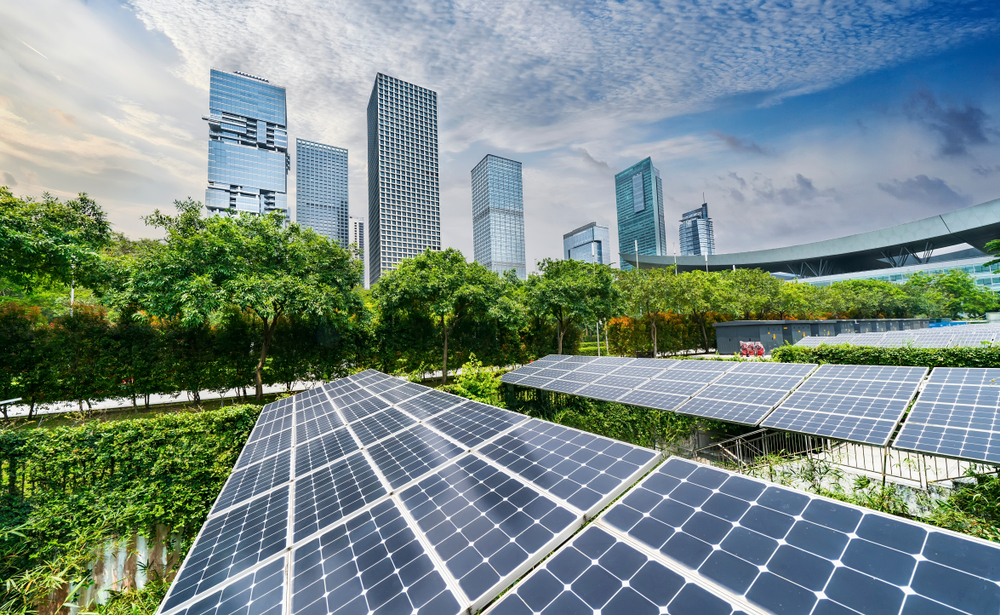The future of renewable energy is promising on its own. But it’s microgrids that have been the key to transforming the energy industry and how people create and consume energy.
Microgrids—the small-scale, autonomous localized grids—have been shown to provide cleaner power and greater reliability.
As renewable energy technology improves and solar panel costs continue to drop, microgrids have been rapidly becoming one of the most important and popular forms of energy storage and creation today.
But what exactly are microgrids? Why do they work so well as off-grid solar systems for rural communities or disaster-prone areas?
In this post, you’ll discover what microgrids are, how they work and why they’re making such an impact in the energy sector.
Table of Contents
What Is a Microgrid?
At a closer look, microgrids are clearly setting themselves up to be the energy sector disruptor. These are forms of localized energy that generate power and keep it flowing to those nearby.
They’re perfect as a backup source when the local utility grid fails. They also help to reduce carbon emissions and help with cost management for those that use microgrids.
These systems can be found powering local areas, like factories, business centers or college campuses. Depending on the type of microgrid, it can be used as a form of backup power in emergency situations or as a main source.
If you ever want to know which buildings or areas operate on a microgrid, look for ones that light up in the midst of a power outage! Microgrids that are strategically placed can also form a symbiotic relationship with the traditional grid.
When placed appropriately, they provide an abundance of benefits. One benefit is reducing overall strain when there’s a limited supply. This helps to reduce the number of power outages and helps to cut costs.

Source: Sajid1264/Shutterstock.com
Types of Microgrids
There are three main types of microgrids to be aware of. Each type has its benefits and impact on the energy industry. Also, they will all contain similar pieces of equipment, such as solar panels, installation racks and solar inverters.
Although, some may need additional equipment like batteries and battery storage.
Remote Microgrids
Remote microgrids, or off-grid systems, operate entirely in “island mode.” That’s because they are physically removed from the traditional utility grid.
These microgrids benefit the community by creating an energy system that’s both flexible and resilient. The increased flexibility and resilience are key factors in helping to limit the number of mass outages due to severe storms, fires and other unforeseen circumstances.
These benefits of remote microgrids aren’t limited to either utility companies or the communities that use them. Rather, they hold a number of benefits for both parties, especially those in remote or rural areas.
For example, utility companies can use remote microgrids as distributed energy resources to give remote customers the same reliability as those closer to the city.
Additionally, remote microgrids can be rapidly deployed and are easily scalable. That means it can help save time and money and provide a better energy experience for those living on the edge of the grid.
They can even help businesses by reducing energy costs with practical energy management practices. These include practices such as peak shaving and being a part of demand response programs.
Grid-Connected Microgrids
The second type is a grid-connected microgrid. These have a physical connection to the traditional grid through the point of common coupling—a switching mechanism.
However, they can also disconnect and go into island mode like remote microgrids and reconnect on an as-needed basis. When it’s connected and not on island mode, it’s integrated with the local utility provider and contributes to grid services, including:
- Demand response
- Frequency regulation
- Voltage regulation
- Real and reactive power support
- And more
By contributing to grid services, grid-connected microgrids help address potential issues with voltage, quality, reliability and capacity.
When this microgrid is switched over to island mode, it must use energy storage like batteries for local frequency and voltage controls. Many of those that use this system and flip between grid-connected and island mode tend to incorporate a battery storage system.
At the end of the day, grid-connected microgrids prove to be economically viable for relatively small areas such as factories, military bases and medical complexes.

Source: asharkyu/Shutterstock.com
Networked Microgrids
Networked microgrids, also referred to as nested microgrids, are essentially multiple separate distributed energy resources that connect to the same utility grid segment.
These microgrids are used to serve a much wider area than the other types. Networked microgrids use a supervisory control system for management and optimization.
The supervisory control system is used to operate and coordinate each microgrid, whether connected or on island mode, at varying tiers of hierarchy. These microgrids are essentially the building blocks of smart cities and communities.
Microgrids and the Future
Microgrids are the future, and the world has taken notice. As the demand for solar power systems continues to grow, governments around the globe will see favorable conditions appear in the marketplace.
If you run microgrids through a solar ROI calculator, you’ll find them to be a worthwhile investment, regardless of type.
The clear amount of benefits that microgrids come with and the very worthwhile ROI make it hard to deny the impact microgrids currently and will continue to have on the energy industry.





